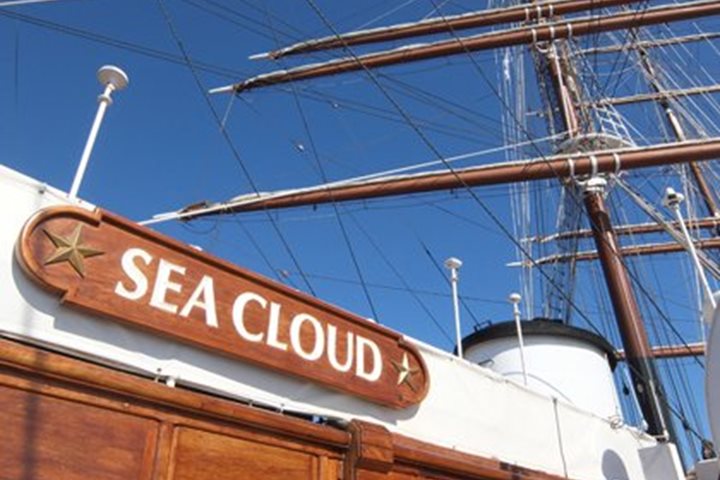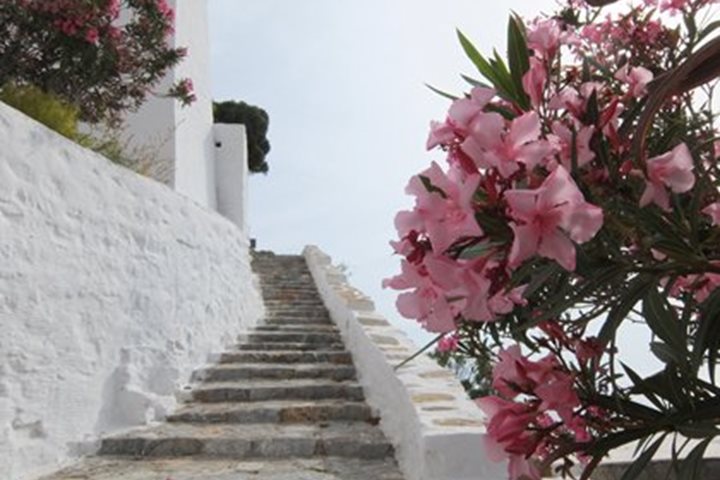Sea Cloud dropped anchor in the bay directly off the Turkish city Didim at 8a.m. The weather was a balmy 72F with almost no breeze. We tendered ashore to drive the short distance to the great temple of Apollo in ancient Didyma. The coach ride is only 10 minutes and shortly we were at this impressive site and we were the only visitors there!
The Temple of Apollo at Didyma achieved its great distinction in antiquity because it was one of four oracular temples dedicated to Apollo. Like its sister site Delphi, Didyma in ancient Ionia hosted a priestess whose take it was to utter the oracular pronouncements which were then interpreted by the Branchidae priesthood. Imagine if you will the following scene: Trajan (98-117), the Roman Emperor is said to have come to this temple and petitioned the oracle. The oracle predicted he would become emperor—wouldn’t you! How did the average visitor behave at this site? The petitioner would first pay an oracle tax and or leave a sacrifice and then make a purifying ablution at the well in front of the grand staircase beneath the watchful eyes of the massive carvings of Medusa, whose head looked down from the temple frieze. One then entered, as we did, down the 50-meter long sloping tunnels only to emerge into the blinding light of day in the central courtyard of the god. Blazing light, the symbol of Apollo the Sun God, greeted you after the dark tunnel walk. The actual shrine of Apollo was at the rear of the temple and marked by a sacred myrtle tree. There is a well nearby and some speculate that either a gaseous emission as at Delphi or sulpherous water provided the stimulation for the oracular pronouncements. The oracle was typically cryptic and its subsequent interpretations could hardly be tested. Whatever the effectiveness of the oracular pronouncement, the shrine was enormous popular. So popular indeed that it is one of the largest Greek temples ever built.
The Temple of Apollo at Didyma is 110 meters long (approximately 360 feet) by 51 meters wide (165 feet). The freestanding columns are approximately 22 meters high (71 feet) and there were planned 122 columns to be arranged in the typical peristyle fashion. The columns are ionic and beautifully carved. The temple was first erected in the 7th century BCE but destroyed by Persians in the mid-6th century and largely rebuilt in the mid 4th century. It is very clear from the carvings throughout the temple that it was never finished. The pediments of some columns are not carved while those of their fellows adjoin them are fully carved. The frieze along the lower orders of the walls is carved in the front but ends shortly thereafter. The historical record does not provide any trustworthy details as to why the temple was unfinished. I am grateful that it is as finished as it is. Earthquakes likely toppled most of the structure after the 5th century CE.
We retuned to the Sea Cloud and were able to go for a very refreshing swim off the ship in the cerulean blue waters of the Aegean. All were fully refreshed and had a hearty appetite for lunch. We furled sails at 2p.m. and Tom O’Brien led a walking tour describing all of the sails and their functions. AT 3:30 Tom Heffernan gave a lecture entitled: “Gone, All Gone, My Children Lost: How the Black Death Created the Modern European State.”
At 6:30 we were invited to Captain Pushkarev’s Welcome Cocktail Party on the lido deck where he introduced his officers. We sailed during dinner to tomorrow’s stop Bodrum and were able to disembark in this very sheik port city for an after dinner stroll along the quayside. Off to bed after a wondrous day.









